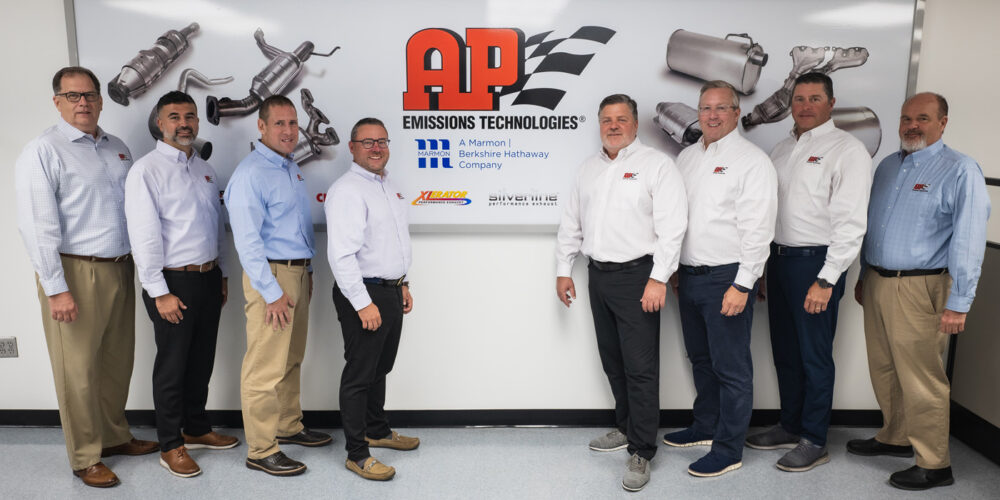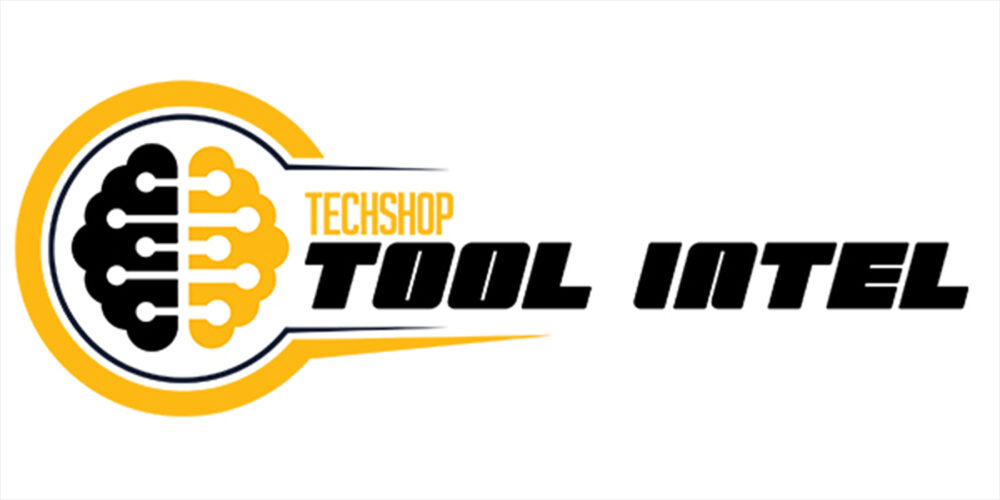Since the 1920s, AP Emissions Technologies has focused on products and people. It started when John Goerlich acquired the patent rights to a muffler company and founded Associated Parts in Toledo, Ohio. It continued as Vange Proimos and his family entered the business in the 90s, strategically expanding through acquisitions. In January this year, the company experienced another strategic shift. Marmon, a Berkshire Hathaway Company with hundreds of manufacturing and service businesses, acquired the company.
Despite change, longtime company executives, along with Proimos, are proud that AP Emissions Technologies’ core values, integrity and rich heritage continue as the team looks to leverage the backing of a global organization like Marmon. Expanding investments in automation and R&D capabilities to introduce new products are top priorities on the list.
“Our spirit of entrepreneurism continues with Marmon,” says Gary Nix, a 28-year company veteran who heads the emissions side of the business. “We have nearly 1,000 stakeholders across multiple sites bonded together by unique values and a culture all dedicated to serving the customer. Marmon’s emphasis to accelerate investments in technology and their global resources will take us to the next level.”
The AP Emissions Technologies team sat down with aftermarketNews to share what will be changing in the coming years and how Marmon’s investment in the company is ensuring its strong future.
Increased Manufacturing for a Larger Footprint
Today, AP provides the market with a full assortment of automotive exhaust and emissions technologies. It has vertically integrated manufacturing, a large footprint and an executive team with over 100 years of automotive aftermarket experience combined. Steve Nuneviller, executive vice president of finance and accounting, said the company has had consistent growth year over year in top-line revenue and bottom-line earnings. Rich Biel, president of AP Emissions Technologies and longtime Marmon executive, says those attributes, including those that Proimos instilled, and a “listen to what the customer wants and the rest takes care of itself” philosophy are what attracted Marmon to AP.
“From catalytic converters to exhaust tailpipes and everything in between, AP is unmatched in product quality, coverage and depth,” he says. “AP hits all the strategic objectives within Marmon’s automotive aftermarket group. They’re characterized by a large market with strong barriers of entry and are growing at a healthy rate with high-margin, non-discretionary products.”
Nuneviller said with AP and Marmon having common goals, the new ownership transition has been seamless.
“These [Marmon executives] are aftermarket folks that get the business,” he says. “They know who the customers are, who the vendors are and what they provide us. The AP and Marmon partnership makes so much sense and has been great for the company and its employees.”
Jayme Farina, executive vice president, adds that one thing that will never change is AP’s focus on serving its customers.
“We have believed in giving our customers the right product in a timely manner and at a competitive price for decades,” Farina says. “Marmon shares those same principles and our passion for innovation will drive us to stay at the forefront in the emissions space.”
One important aspect of Marmon’s backing is that each company is autonomous, Biel says.
“We have to have the best coverage, most new products and best cost basis to deliver value to our customers,” Biel says. “Marmon’s vision is to support its companies with the resources needed to deliver this formula.”
Nix adds: “Marmon brings strength and support to every facet of the business, whether it’s manufacturing technologies related to automation, IT, systems, leveraged distribution or long-term financial investments. They have the expertise in every one of these areas to help build a stronger AP.”
Vertically Integrated and Data-Driven
From the start, AP has been a nimble company—another aspect that attracted Marmon Holdings. AP’s ability to change quickly based on the needs of the marketplace and its customers is rare in an organization of its size. It has nine brands serving a multitude of distribution channels, specialty markets, wholesale markets, retail and e-commerce. The company sells a whopping 15,000 parts for all makes and models, ensuring that it has what customers need.
AP has been able to do this thanks to its vertically integrated manufacturing process. It starts with the purchase of millions of pounds of steel brought in through the port of Wilmington, North Carolina, nearby the company’s distribution center in Goldsboro. From there, AP makes the individual parts for specific products: They coat their own catalyst substrates on state-of-the-art, fully automated, vacuum-controlled equipment that optimizes expensive precious metals. They roll and weld their own tubing, stamp parts, bend pipes and assemble mufflers—with ever-expanding automation to remain cost competitive.
“It’s all done in-house,” Nix explains.
Because AP has U.S.-based manufacturing and makes many of its own components for its products, supply chain complexities are diminished. In addition, with R&D teams and tooling engineers integrated into the manufacturing process, the company can respond quicker to changes in the market.
Data plays a big part in allowing the company to change on a dime. The company’s business sales, tracking, planning, scheduling and production software make sure every step is measured. The results are used to ensure that AP is making the right parts for in-demand applications.
“OEM research, video data, catalog content—they’re all rich sources for information to help steer our teams in the right direction to deliver the right parts on time,” Nix adds.
Doing Whatever it Takes for the Customer
At the core of AP Emissions’ values is service to the customer. The company’s promise of quality, coverage and delivery revolves around the customer experience. From manufacturing to delivery, AP vows to produce quality parts for whatever job customers may encounter—whether it’s for the performance, passenger car or commercial market—that are delivered on time through a high-service supply chain. “Our goal is to understand the voice of the customer and to provide solutions to them when they need it,” says Biel.
“We’re a company and management team that cares about its people and its community, which includes our customers and our vendor community,” said Yusef Ewais, executive vice president of human resources. “At AP, we are proud of our strong culture. Our culture is based on three important pillars: trust, respect and collaboration.”
Sales representatives on the ground give AP an edge when it comes to staying up to date on products. Henry Hippert, vice president of sales, says AP’s national sales force—experts in emissions and exhaust—have nearly 400 years of experience in the field combined. Glenn Barco, vice president of sales, credits AP’s culture of innovation, urgency and “doing it right” for the way its team interacts with the aftermarket and its valued customers.
“Relationships are paramount here at AP,” Barco says. “Every one of our experienced sales team members are dedicated to problem solving and increasing our customer’s market share.”
Farina and Biel agree that AP’s people are the engine that keeps the company running. “They come in every day with a smile on their face and do their job with pride,” Farina says. “We have a culture that inspires the team and builds on each other’s strengths.”













